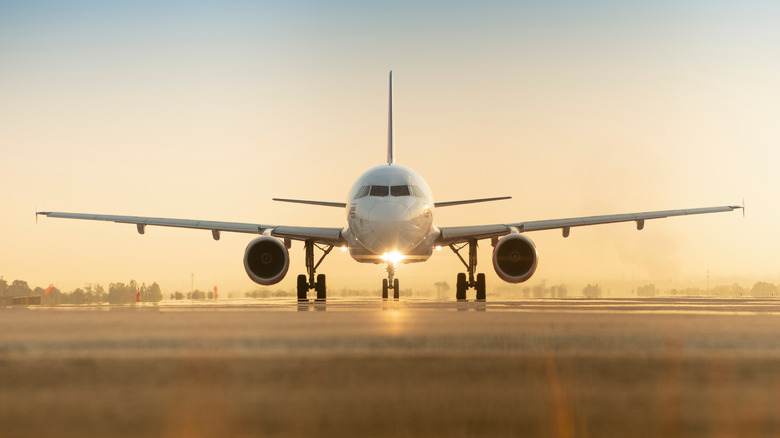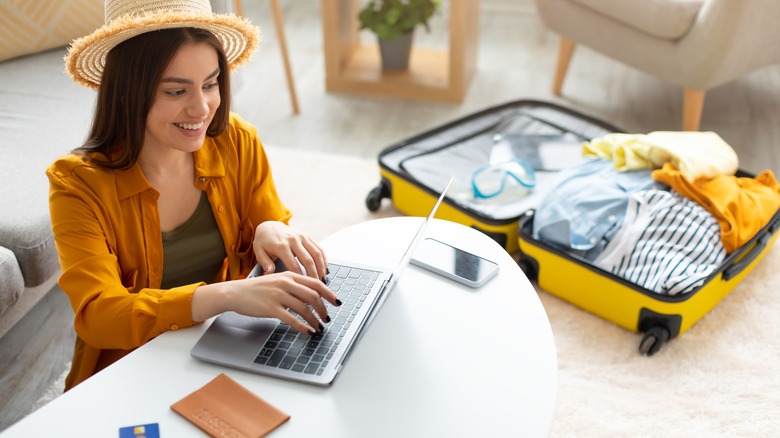5 Essential Packing Tips For Moving Internationally
Moving abroad provides such a wonderful opportunity. From cultural immersion to a workplace that simply does things a little differently than you might be used to, moving internationally can create an immense world of possibilities.
Many people working in large corporations or within the U.S. military might have the opportunity to relocate permanently or temporarily to Europe, Asia, or elsewhere. And this isn't even beginning to consider the option to study in a country beyond your home; a four-year degree or specialized postgraduate education from an international institution can set you apart from the pack when it comes time to seek out full-time employment. This option also can create the potential to stay in your host country for work if you've fallen in love with the culture and everything that comes along with it.
From the vaunted Rhodes Scholarship (that's given out to 32 American students among the 103 total scholars selected each year, via Rhodes Trust) to undergraduate work anywhere in the world — not just in England — collegiate study can be made far more fulfilling with the addition of or focus on foreign opportunities.
Regardless of your reasons for moving beyond the borders of your home country, there are some key packing tips that will make the process far smoother. With these in mind, getting ready to make the jump doesn't have to be quite so daunting.
1. Plan far in advance
Moving abroad involves a lot of moving parts. Workers, students, and even retirees looking for a change of scenery will need to secure their visa, find a place to call home, and much more. The visa process alone can take weeks or months and dozens of forms and documents. Before you even begin to think about packing, you'll need to start planning for the visa applications, costs, and requirements. The U.S. Department of State offers in-depth guidance on the requirements for travel to every country on the planet and is a great place to begin your planning phase.
Once you've started on the visa needs and begun to organize travel arrangements, hotel, AirBnB rooms, or other interim accommodation, and gotten a feel for the transportation outlets available in your future home, you can begin to pack for the move. In addition to planning out the logistics of the transit, it's important to think about climate considerations in this new space. A Chicagoan moving to southern Spain might have to rethink their wardrobe and other aspects of routine life, for instance.
Planning takes on a number of key action items, and thinking through each phase of this early part of any move can make the chaos of an international relocation far more subdued.
2. Pack as light as you can
This goes for clothing and other items that you may be thinking of bringing along (such as decorations, toiletries, and any other gear that factors into your lifestyle). For one thing, the heavier your luggage, the more you'll struggle to haul it around and the more it will cost to relocate (via My Adventures Across the World). Heavy suitcases and a litany of boxes invite bloat that simply isn't necessary. While you're packing, a great practice to employ is a two-step process. Before you even take the suitcase out of your closet, attic, or garage, start piling up the clothing that you want to bring along. Then, after you've separated potential clothing options from the drawer full of other items, start the pack over again, but this time from just the items selected initially.
As well, by taking a ruthless and spartan approach to the packing process, you will ultimately give yourself the breathing room needed to launch a new lifestyle that makes effective use of local tastes and amenities. One clear benefit of moving abroad is the unparalleled ability to immerse yourself in a new local cultural reality. By bringing along all your comforts and decorations from home, you've already robbed yourself of the wholly open-minded experience that can be had upon stepping out of the airport doors.
3. You may need some essential and specialized electronics
Connectivity devices have become a must for anyone even traveling for a day. Bringing along a laptop, tablet, and phone with you to your new home is likely an afterthought rather than a serious packing question.
However, there is some additional planning that needs to go into the way you pack and use your electronics. American plugs simply aren't the same as those in England, Germany, or Japan. Skyscanner offers a simple guide to different plug types found around the world. Purchasing a travel adapter (or multiple) is an important step in preparing to take this plunge.
Once you've arrived in your new home, though, you might want to consider investing in certain replacements for your existing devices (like an electric shaver, toothbrush, or hair dryer). In addition to plug shape differences, national grids provide power through wall outlets at different voltage ratings. This can lead to trouble in the safe use of certain devices over the long term. Replacing some items that might not be well suited to the simple changeover with a travel adapter is the best way to mesh with your new home in this regard.
4. Sell or donate as much as you can
Avoiding storage needs is a core component in any move that will take you beyond your home country. Storage costs can quickly rise, and if you are abroad, there isn't really anything that can be done to counteract a rent increase on your storage unit. There will always be some things that need to be kept for the long term, such as tax documents, birth certificates, degrees, and other paperwork, and you may have childhood items that you don't want to part with either. However, the bulk of a person's life possessions are generally devoid of deeper meaning, so holding onto them will only increase the dependence you experience on a storage company in your current local area.
Statista reports that self-storage operations are expanding across the country, with almost 60 million square feet of total unit space in the U.S. in 2020. Similarly, the total vacancy rate has stayed steady, with a slight decline in recent years, signaling a continuing rise in demand for storage space. This all means that consumers can expect pricing to continue to rise gradually alongside the natural price inflation of goods and services over time, as well as in relation to local demand.
Selling furniture and unneeded items that you don't and won't use can give you a little extra cash for the move, and donating the rest allows others to continue getting value out of the items rather than adding them to a landfill.
5. Consider your transportation needs, then plan and pack accordingly
Transportation is a key consideration to make in any living situation. When moving abroad, you may be tempted to ship a car, motorcycle, or bike to meet you in the new location. Schumacher Cargo Logistics notes that only a car with sentimental value might be worth the potentially high costs involved.
It's also worth looking into how much it might cost to purchase a vehicle in your new location, as the price to ship (including import and registration taxes) might be far higher. Similarly, it's essential to check the side of the road you'll be driving on if you do decide to ship or purchase a car. Rhino Car Hire notes that 75 countries place their driving fixtures on the right side of the car (rather than the left, where American drivers are positioned), and drive on the left side of the road as a result. These countries include Ireland, Australia, Britain, South Africa, Japan, Thailand, and Kenya. A shift in the side of the road you drive on will render your car essentially useless abroad.
Another option is the use of a bike, motorcycle, or scooter. These are often easier to purchase in the new location, but bringing along key safety equipment might be a good idea to get a jump start on your personal transportation requirements.





